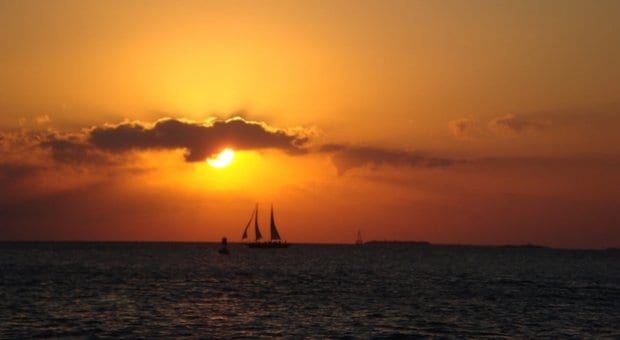
Take in spectacular views with a sunset cruise. Credit: Lesley Fraser
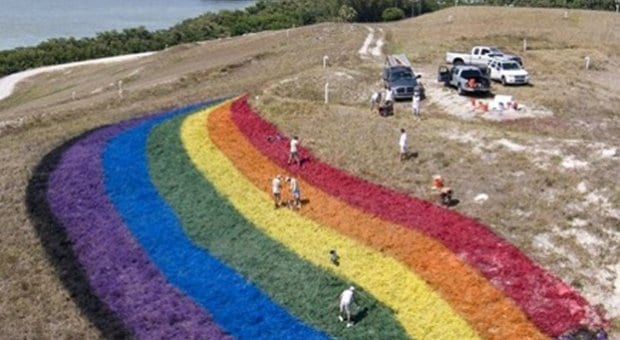
To promote Key West Pride 2013, local organizers painted a giant Pride flag on Mount Trashmore. Credit: Andy Newman, Florida Keys News Bureau
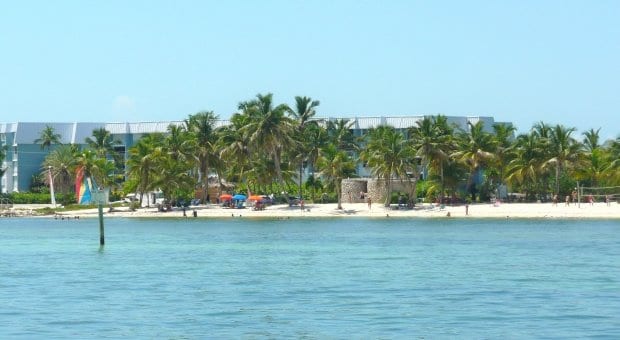
Lined with coconut palms and often crowded with both locals and tourists, Smathers Beach is Key West’s largest public beach and sits at mile marker zero of the beginning of state road A1A. Credit: Marc Averette
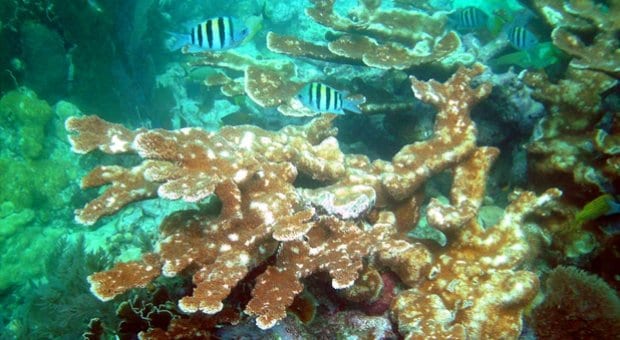
Elkhorn coral. The Florida Keys are home to the only living coral reef in the continental United States. Credit: Jim Stuby
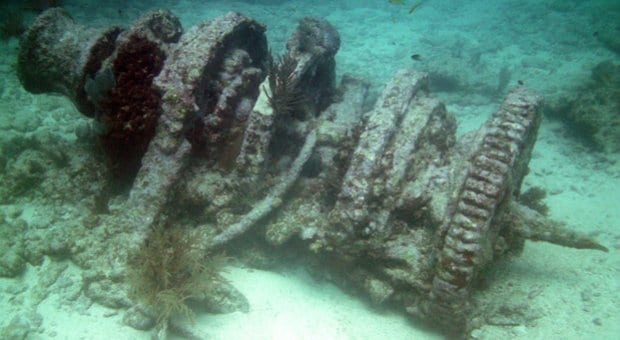
Alongside exploring beautiful coral reefs, scuba divers hunt for ship wreckage. Credit: Jim Stuby
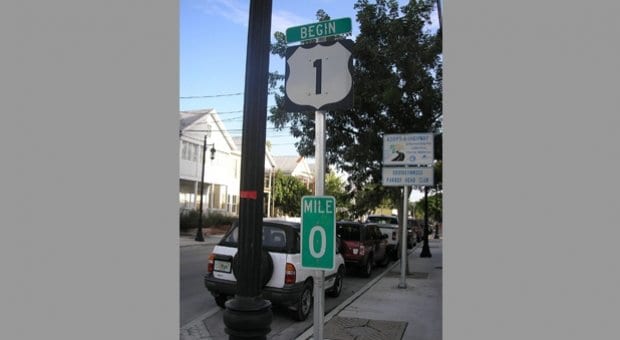
Mile zero of US Route 1 starts at 490 Whitehead St in Key West, near the courthouse. Credit: Deror Avi
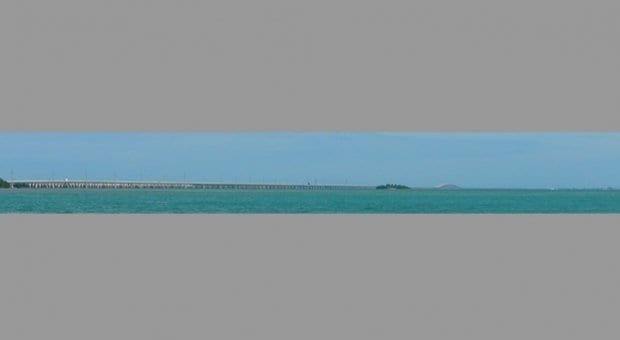
The full-span Seven Mile Bridge; the arc over Moser Channel to the right, Knight’s Key to the extreme right. Credit: Marc Averette
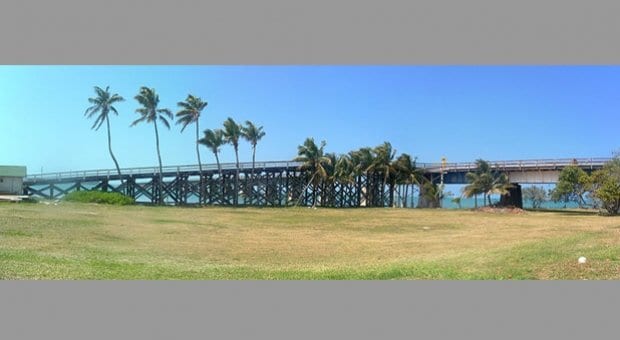
A portion of the Seven Mile Bridge. Credit: Ebyabe
As tempting as it might be to spend all your time in Key West on Duval Street, don’t. After all, the town is surrounded by water, so make sure you get in it, on it, above it or beside it, even if you’re just sitting naked poolside at Island House.
Water, water everywhere!
Start your day with early-morning yoga at Fort Zachary Taylor beach. The drop-in fee covers your entrance to the park (just tell the people at the gate that you’re there for yoga), which is also a great place to watch the sunset, a nice contrast to the carnival-like chaos of Mallory Square.
Although Key West is not known for its beaches (like the rest of the Keys, Key West is a coral island, so there’s little sand to begin with, and the offshore living reefs provide a barrier to waves and swells, which means none is deposited; any sand you do find has likely been trucked in), there are several options. Aside from Fort Zach, Smathers Beach is the biggest and busiest, with a crowd that skews young. Higgs Beach features the Civil War–era Fort Martello (now the home of the Key West Garden Club), chair rentals and the beachside Salute café. South Beach, close to the official southernmost point marker (be sure to have your picture taken!) at the quiet end of Duval Street, is a locals’ favourite.
Key West, like the rest of the Keys, is a great place for sport fishing (the town of Islamorada, further up the Keys, claims the title of “Sport Fishing Capital of the World’’). If you want to explore your inner Hemingway, check out the various companies that offer charters and guides.
Thrillseekers will enjoy Barefoot Billy’s jetski tour, a two-hour clockwise trip around the island. (A note for novices: you’ll be soaked from head to toe, so if you have sunscreen on your forehead, wash it off, or you’ll be blinded by both it and the saltwater.) Fury Watersports’ parasailing adventures are great fun, as are the pros who run them. Once you’re up, it’s remarkably quiet and peaceful, and it’s a great way to take in the lay of the land.
Basically, every water activity known to man is available in Key West, whether it’s snorkelling, sailing, kite- or paddle-boarding, kayaking or swimming with dolphins, so dive in!
Road trip discoveries
Those who fly into Key West get a brief glimpse of the rest of the Keys from the air; those who drive in are often focused blindly on getting there. It’s a shame to miss out on what’s in between, though, so get in your car or rent one and explore this beautiful region.
Your trip will take you along the 200-kilometre stretch of US 1 known as the Overseas Highway. The road more or less follows a route laid out by Henry Flagler, the founder of Standard Oil. Flagler was the man responsible for the development of much of Florida’s east coast and the builder of the Florida East Coast Railroad. The Key West extension, called the Overseas Railroad, was completed in 1912 but severely damaged in a huge hurricane in 1935; its highway replacement opened in 1938.
Start at Mile 0, at 490 Whitehead St in Key West, and go from there. Fans of Americana will have a heyday with all the roadside attractions and kitschy restaurants, but it’s also a dream for wildlife lovers.
Just over the Cow Key Channel bridge is Stock Island, which for decades was a service island and the holding pen for the area’s cattle. It’s being developed rapidly — there are a few terrific restaurants — but still feels pleasantly gritty. Be sure to drive past “Mount Trashmore”; the now-closed landfill holds the distinction of being the highest point in the Lower Keys.
The Lower Keys, aside from Key West, are green and quiet, so be sure to detour along some of its side roads out into the mangroves, or even out to the Great White Heron National Wildlife Refuge (it’s accessible only by boat; drop by the visitor centre on Big Pine Key for information on getting there).
The Florida Keys are home to the only living coral reef in the continental United States, and Looe Key’s portion of it, to the south of Big Pine Key, is considered by many to be the most beautiful. Needless to say, it’s a great spot for diving and snorkelling.
A highlight of the drive is the Seven Mile Bridge, the most impressive of the Keys’ 42 bridges. When the original (a new one was built in the early 1980s; the original is now used mostly as fishing piers) was completed in the early 1900s, it was considered the eighth wonder of the world.
The village of Islamorada encompasses six small islands and calls itself the “sport fishing capital of the world.” Not surprisingly, fresh seafood is the hallmark of its restaurant scene. It also has a healthy arts scene, and the Morada Way Art and Cultural District is a great place to spend an afternoon or evening.
From Islamorada, catch a boat to Lignumvitae Key. It’s covered by what is thought to be virgin hammock, making it the last untouched tropical forest in Florida.
Your jaunt will wrap up in the Key Largo area, the main access point for the reef; John Pennecamp Coral Reef State Park is just beyond the town (and beyond that, the road turns toward the mainland). There are any number of outfitters in town who will be happy to set you up for a diving or snorkelling outing, but the most interesting way to see the reef is via the Coral Restoration Foundation, which is fighting to save what are the most threatened coral reefs in the world. The foundation’s nurseries cover more than an acre of ocean floor, where corals grow for a year before being transplanted to the reefs, and there are various opportunities to take part in the replanting.
For the most up-to-date travel information on gay Key West, see our City Guide, Listings Guide, Events Guide and Activities Guide.
Legacy: February 19, 2015 4:00 amRepublished; originally published March 3, 2014
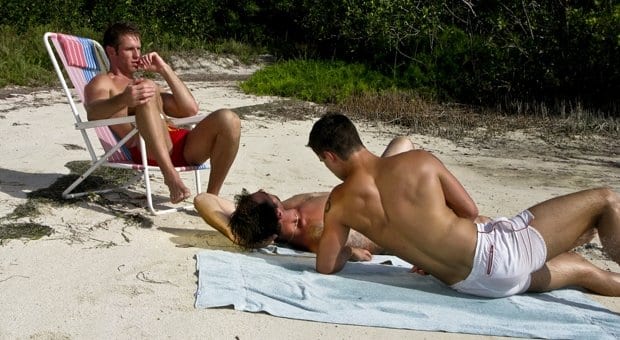
 Why you can trust Xtra
Why you can trust Xtra